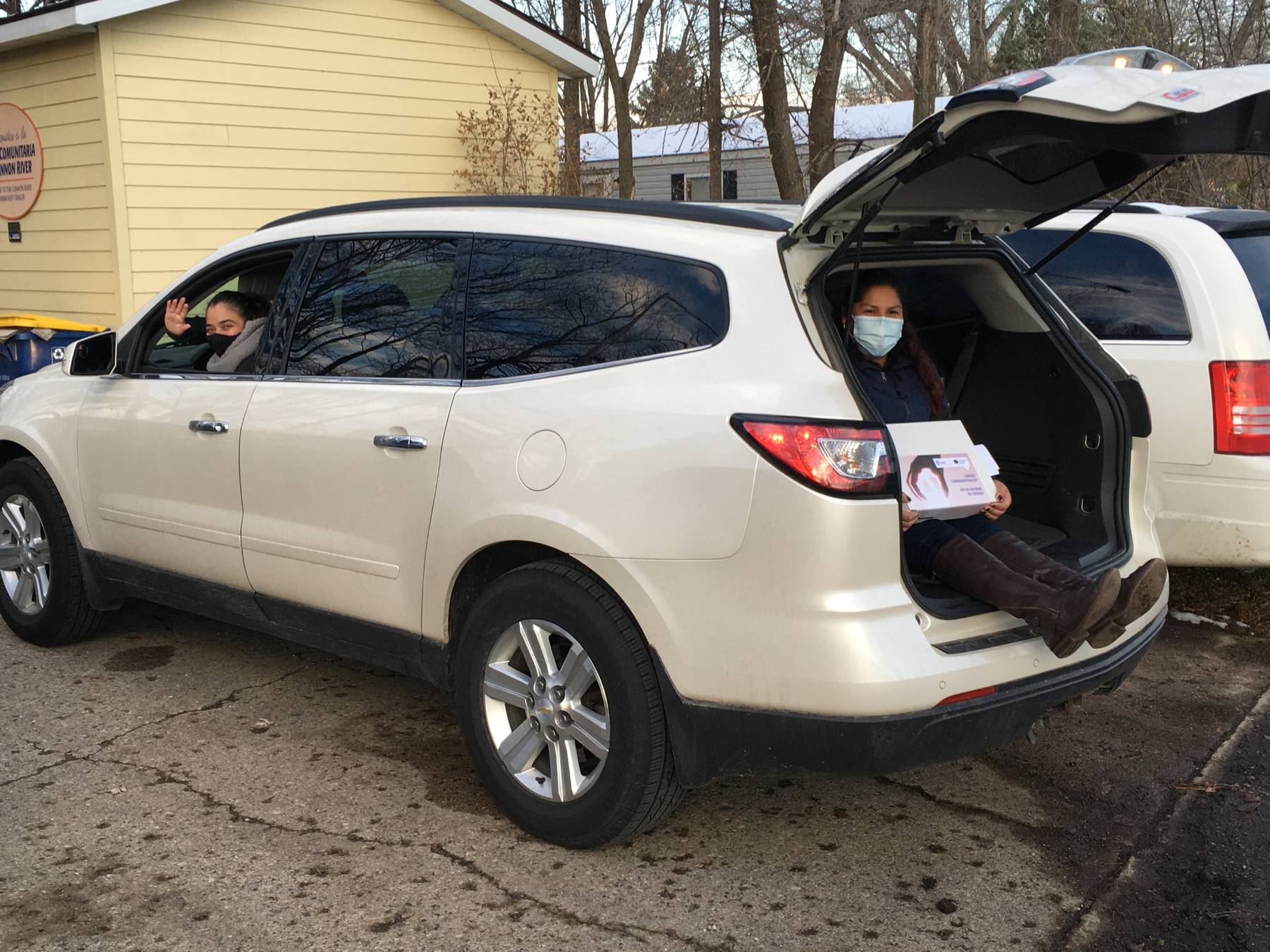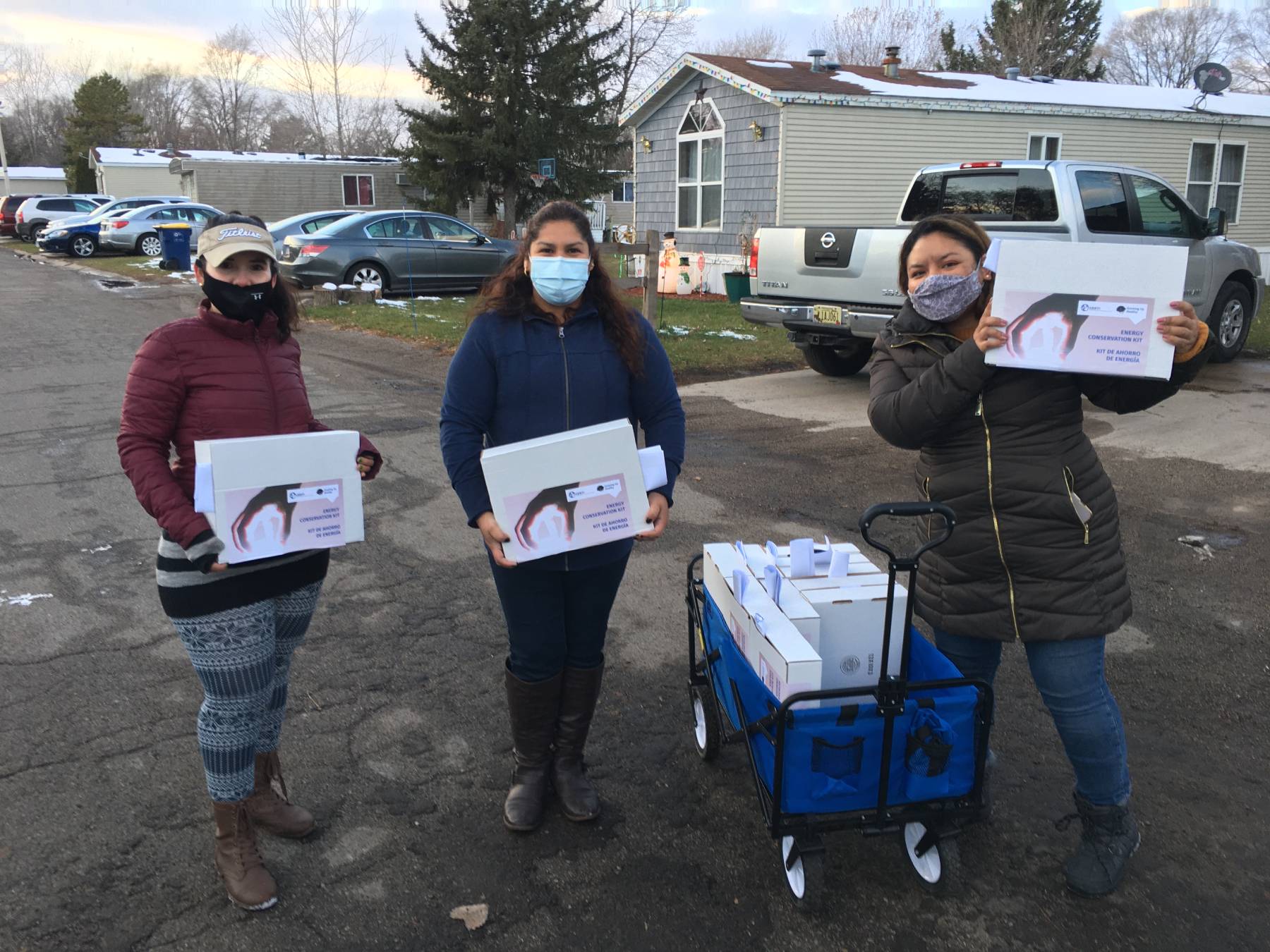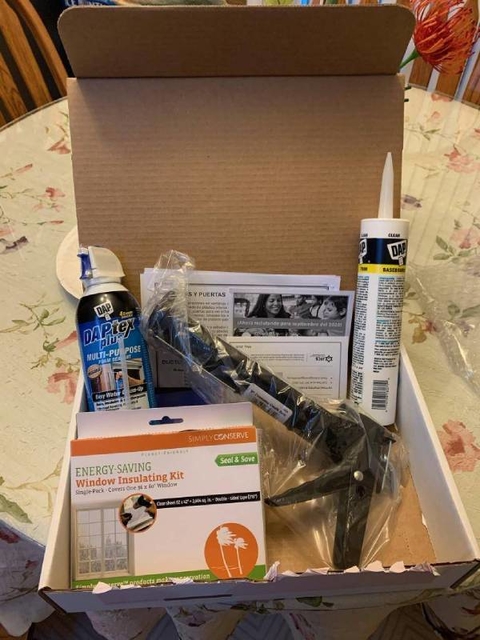Many families in Greater Minnesota face difficult choices on how to prioritize paying their utility bills, rent or mortgage and other essential expenses such as food, clothing and school supplies.
When a family’s home is poorly insulated or has aging, inefficient heating systems or appliances, a larger share of a household’s budget may go toward energy costs. That share is known as their “energy burden.”
Nearly one in three counties in Greater Minnesota has an average energy burden of 5 percent or higher, according to data from the U.S. Department of Energy National Renewable Energy Laboratory, compared to the national average of 3.5 percent and Minnesota statewide average of 2 percent. Some Minnesotan households spend as much as 30 percent of their income on energy.
Reducing the energy burden of all households in Minnesota to under 5 percent by 2025 is the goal of a new campaign led by the Clean Energy Resource Teams (CERTs). CERTs is a unique partnership among the University of Minnesota Extension Regional Sustainable Development Partnerships (Extension RSDP), Southwest Regional Development Commission (SRDC), Great Plains Institute and Minnesota Department of Commerce, working to connect individuals and communities across Minnesota to the resources needed to identify and implement community-based clean energy projects.
By addressing energy burden in Minnesota, CERTs and other partners hope to assist households and underserved communities who pay a disproportionate amount on their monthly utility bills. This work is already improving the comfort, safety and efficiency of homes across the state by investing in local projects and sharing strategies and approaches with communities to tackle this challenge.
“We have found that partnerships bringing together residents, utilities, weatherization providers and other community organizations have been the most effective. This approach builds resident buy-in and empowerment, which is really important, and also helps ensure that we reduce energy burdens as efficiently as possible,” said Joel Haskard, co-director of CERTs at Extension RSDP.
Supporting manufactured home residents
As part of its Under 5% campaign, CERTs has worked to reduce energy burden among residents of manufactured homes. A survey of manufactured homes, prepared for the Minnesota Department of Commerce in 2016, outlined how improved support for manufactured homes in Minnesota can lead to energy savings and address weatherization, insulation and other clean energy needs of these often underserved households. By coordinating with manufactured home parks throughout the state, CERTs and its partners are helping to connect these communities to more resources and tools.
“Manufactured homes have specific challenges and opportunities when it comes to energy, especially in a climate like Minnesota's,” said Melissa Birch, CERTs coordinator and board member serving RSDP’s central region (Central RSDP). Birch helped CERTs develop a new series of guides that include home energy tips and resources for manufactured home residents, renters, single-family homeowners and landlords. The recently published guides are available in both English and Spanish. “Our new guides and videos highlight some of the ways that manufactured homeowners can save money while improving their health and comfort,” Birch said.
In Southeast Minnesota, a partnership between Growing Up Healthy and CERTs has helped hundreds of families living in manufactured homes in Rice County save energy and winterize their homes.
“You can't always find someone who is willing to work on a manufactured home, or if you do it's really expensive. So to be able to empower these families—it gives them the resources to do this themselves and help neighbors,” said Jennyffer Barrientos, director of Growing Up Healthy, about the impact of this work in a video story produced by CERTs.
Drawing on the success of this collaboration, CERTs will continue to work with manufactured home communities across the state, connecting residents to information and tools to save energy.
“During 2021, we hope to work with an additional 15 to 20 manufactured home parks to distribute conservation kits,” Haskard said. “This is ongoing work, and there is more to come.”
Helping energy consumers
In addition to its work with manufactured home communities, CERTs has helped support partners who provide direct support and assistance to energy consumers, especially those facing hardships from the COVID-19 pandemic either due to a loss of income, higher utility bills or both.
“What’s important—especially right now—is that residents know they’re not alone. Many people are worried about bills and having to choose between heating their home or buying food and medicine,” said Dan Thiede, strategic communications and engagement director of CERTs at Extension RSDP. “There are resources and help available.”
For example, a recent partnership with the Citizens Utility Board of Minnesota (CUB), Minnesota Farmers Union and CERTs helped raise awareness in rural areas about Minnesota shut-off protections and weatherization and energy assistance programs. During an interview with CERTs last fall, Carmen Carruthers, outreach director at CUB, explained how investing in consumer education and energy efficiency are important tools to address energy burden, providing households with long-term stability.
“The more consumers are educated, the better choices they can make for their households. They have a role in influencing what energy should look like in the future,” Carruthers said.
Addressing energy burden is no small challenge, but with creative partnerships, community-based approaches and an “all-in, concerted effort,” Minnesota can reduce the energy burden faced by families and households in the years ahead.
“We need more affordable, comfortable and healthy homes for residents across Minnesota,” said Haskard. “If we can address this challenge by reducing energy costs and helping households who are paying more of their income on utility bills, that would be a win.”
To learn more about how the University of Minnesota Extension Regional Sustainable Development Partnerships is supporting CERTs’ Under 5% campaign to address the energy burden in Minnesota, how to get involved, or ways to connect to the CERTs coordinator or steering committee in your region, contact Joel Haskard.
References
Ma, Ookie, Krystal Laymon, Megan Day, Ricardo Oliveira, Jon Weers and Aaron Vimont. 2019. Low-Income Energy Affordability Data (LEAD) Tool Methodology. Golden, CO: National Renewable Energy Laboratory. NREL/TP-6A20-74249. https://www.nrel.gov/docs/fy19osti/74249.pdf.
Pigg, Scott, Jeannette LeZaks and Dan Cautley. 2016. Minnesota Manufactured Homes Characterization and Performance Baseline Survey. Saint Paul, MN: Seventhwave and Minnesota Department of Commerce, Division of Energy Resources. COMM-20140512-087861. https://www.cards.commerce.state.mn.us/CARDS/security/search.do?method=showPoup&documentId={113BBCF2-C2
Map Note: Full list of average energy burden in Minnesota by county (U.S. Department of Energy)
- Counties with average energy burden greater than 5%: Aitkin, Becker, Beltrami, Big Stone, Cass, Clearwater, Cook, Faribault, Grant, Kanabec, Lake of the Woods, Lincoln, Mahnomen, Meeker, Mille Lacs, Norman, Pine, Pope, Roseau, Stevens, Swift, Todd and Traverse;
- Counties with average energy burden between 4-5%: Carlton, Douglas, Fillmore, Goodhue, Houston, Hubbard, Isanti, Itasca, Jackson, Kandiyohi, Kittson, Koochiching, Lac qui Parle, Lake, Marshall, Morrison, Murray, Otter Tail, Pipestone, Red Lake, Redwood, Renville, Rock, Sibley, Wadena, Watonwan and Yellow Medicine;
- Counties with average energy burden between 3-4%: Benton, Blue Earth, Brown, Chippewa, Cottonwood, Crow Wing, Dodge, Freeborn, Le Sueur, Lyon, Martin, McLeod, Mower, Nicollet, Nobles, Pennington, Polk, Rice, St. Louis, Stearns, Steele, Wabasha, Waseca, Wilkin and Winona;
- Counties with average energy burden between 2-3%: Chisago, Clay, Hennepin, Olmsted, Ramsey, Sherburne, Washington and Wright; and
- Counties with average energy burden between 1-2%: Anoka, Carver, Dakota and Scott.
- No counties in Minnesota had an average energy burden of less than 1%.







